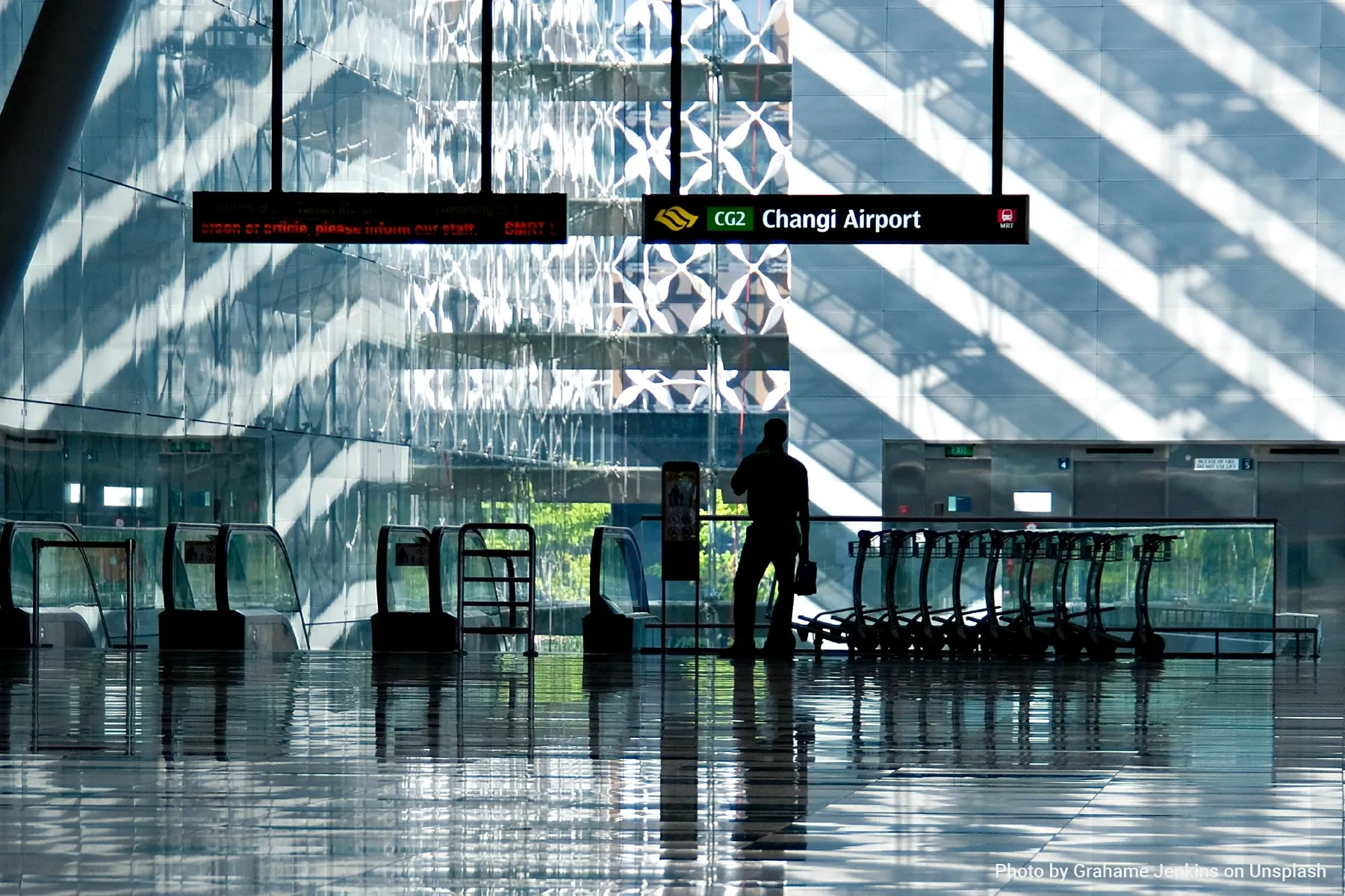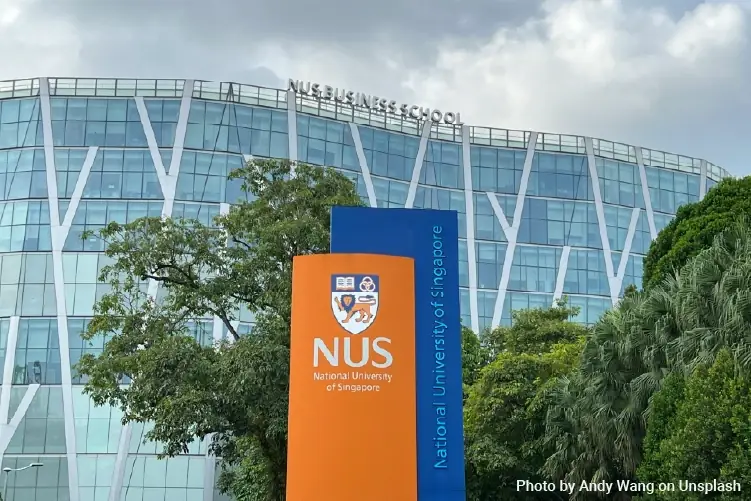A Step-by-Step Guide to What to Do After You Land in Singapore

Singapore is more than its glittering skyline and mouthwatering hawker food (although those are epic too). It’s a vibrant mix of cultures, opportunities, and adventures waiting to be explored. Whether you're here as a first-time traveller, an international student, or simply someone stepping foot in the Lion City for the first time, we’ve got your back.
Confused about what to do after you touch down? Don’t worry. This step-by-step guide will walk you through exactly what to tackle first, so you can start your new chapter in Singapore with confidence and excitement.
Step 1: Breeze Through Immigration
First things first, let's talk about arrival formalities. Singapore Changi Airport is world-famous for its efficiency and organisation (plus the on-site waterfall, because why not). To clear immigration smoothly, ensure you have these documents ready:
- A passport valid for at least six months
- A completed SG Arrival Card (submit online prior to your arrival)
- A visa (if required for your nationality)
- Proof of onward travel or accommodation details
- A student pass (for international students entering Singapore)
If you're here for study or work, have your approval letters handy to fast-track the process. Doesn’t hurt to keep everything accessible in one folder or digital file.
Step 2: Pick Up Your Bags and Essential Gear
Once you’ve passed immigration, it’s time to grab your luggage. Here’s a pro tip for first-timers in Singapore (especially students): right after you collect your bags, hit the SIM card kiosks and money changers available at the arrival hall.
Why? Because in Singapore, having a local number is crucial for things like signing rental agreements or ordering food on apps (trust us, you’ll want easy access to chicken rice at 2 AM). Some popular local SIM card providers are Singtel, StarHub, and M1.
If you're looking for a hassle-free and quick way to stay connected, consider getting an eSIM instead of a physical SIM card. Many eSIM providers allow you to activate a local prepaid mobile plan instantly, even before you land in Singapore. Popular options include Airalo, Holafly, and Nomad, which offer competitive rates and reliable network coverage. With an eSIM, there’s no need to swap out physical cards — it’s all done digitally, straight from your phone. Plus, this is a fantastic choice if you're travelling to multiple destinations, as you can easily switch plans without juggling physical SIM cards!
Also, don’t forget to exchange a bit of cash while at the airport. While most transactions here are cashless, small hawker stalls or taxis may still prefer physical currency.
Step 3: Start Your Accommodation Hunt
If you don’t already have housing secured, it’s time to get cracking. Book a temporary stay at a budget-friendly hotel or hostel for a week or two while you explore your long-term housing options. Some areas to look out for if you’re a student or on a budget include Jurong, Clementi, or Paya Lebar.
When house-hunting in Singapore, you’ll typically have two options:
- HDB Flats: Affordable government housing, often shared among students and professionals.
- Private Apartments: These come at a premium but usually offer additional amenities like pools or gyms.
Pro tip? Collabil (for international students) make this process so much easier.
Step 4: Sort Out Your Transport and Start Exploring
Singapore’s MRT (Mass Rapid Transit) system is a traveller’s dream—clean, air-conditioned, and impressively punctual, it connects almost every corner of the island with ease. To get started, grab an EZ-Link Card or a SimplyGo pass at any MRT station for seamless travel. Prefer something even simpler? No problem—public transport also accepts contactless payments and major credit cards, making commuting a breeze.
Aside from the MRT, Singapore’s extensive bus network is another great option for getting around, offering reliable service that reaches areas not covered by the train system. For more flexibility, you can hop into a taxi or book a ride with apps like Grab or Gojek, which are widely used and convenient.
Check out apps like Mytransportsg, Singabus, or Google Maps, which work beautifully here to help you figure out routes and timings.
Step 5: Take Care of Admin Tasks
Before you jump into the fun part of exploring Singapore, spend a day or two tackling your most important admin tasks. Here’s what needs to be on your to-do list as a newbie in Singapore.
For Students
- Register at your educational institution and attend orientation (perfect way to make friends!).
- Open a local bank account. Most students stick to DBS, OCBC, or UOB for their ease and student-friendly options.
- Apply for a Student Pass if you haven’t done so already.
For Professionals
- Register your work pass with MOM (Ministry of Manpower).
- Familiarise yourself with SingPass, Singapore’s digital government services platform.
Don’t Forget!
Activate your local number and sign up for an internet service if your housing doesn’t include it. Platforms like MyRepublic are affordable and reliable!
Step 6: Join the Hawker Food Craze
You’re in Singapore, so it’s mandatory to indulge in the local food scene. Forget fancy restaurants (for now) and head to the nearest hawker centre to try iconic dishes like Laksa, Hainanese Chicken Rice, and Satay. Popular hawker hotspots include Maxwell Food Centre and Lau Pa Sat.
Pro tip? Always say "less spicy" unless you have a serious spice tolerance. Singapore doesn’t mess around with its chilli!
Step 7: Immerse Yourself in the Culture
Part of the charm of Singapore lies in its blend of Malay, Chinese, Indian, and Western influences. Explore neighbourhoods like Little India, Chinatown, and Kampong Glam to see this multicultural mix in action. Don’t miss the chance to visit iconic spots like Marina Bay Sands, Gardens by the Bay, and Sentosa Island.
Singapore also heavily promotes green living. While exploring its cityscapes, you’ll stumble upon lush parks like East Coast Park and MacRitchie Reservoir. Perfect for catching a break amidst the hustle!
Step 8: Make Connections
Moving to a new country might feel overwhelming, but Singapore’s strong sense of community makes it easy to find your tribe. Join local meet-ups, clubs, or activities based on shared interests. There are plenty of groups where like-minded individuals come together, whether it’s expats, students, or professionals.
Looking for help or advice? Facebook Groups like "Singapore Expats" or apps like CloMo (for international students) can connect you with social events or networking opportunities.
Step 9: Settle Into a Routine
Once you have your admin tasks sorted and connections established, it’s time to settle into a routine. Explore hobbies, find go-to food spots, or start a fitness regime at a nearby gym or park.
People often underestimate how small Singapore is geographically, but this works to your advantage. Morning coffee meeting in Orchard Road and sunset yoga session by Marina Bay? Totally doable.
Welcome to Singapore!
Whether you’re here for studies, work, or exploration, Singapore has so much to offer for first-timers. It might seem overwhelming at first, but every step you take will fill you with excitement and confidence.
Before you know it, you’ll be recommending laksa stalls and MRT hacks to other newcomers. And remember, every question or challenge has a million fellow travellers, students, or professionals who’ve been there and are happy to help.
Now step out, explore, and make this Lion City your roaring playground!



